Choosing the right jewelry often comes down to a tough decision between popular metals. Two frequent contenders are stainless steel and silver.
Both offer a sleek, metallic look but they differ significantly in durability, cost, and care requirements.
This guide will break down everything you need to know about stainless steel and silver jewelry. We’ll explore their unique properties from how they wear over time to how they might affect sensitive skin.
What is Stainless Steel Jewelry?
When we talk about stainless steel in jewelry, we’re usually referring to specific metal alloys designed for wearability and resilience.
The most common type is 316L stainless steel often called surgical grade steel. This grade is prized for its excellent corrosion resistance and strength.
The composition of stainless steel typically includes iron, chromium, and often nickel. The chromium is what gives it its “stainless” quality, creating a passive, invisible layer that protects the iron from rusting.
Stainless steel jewelry comes in several finishes, each offering a distinct look:
- Polished: A highly reflective, mirror like finish that looks bright and clean.
- Brushed: A more subdued, textured finish with fine parallel lines, which helps hide minor scratches.
- Matte: A non reflective, satin like finish that provides a modern, understated appearance.
One of the biggest selling points for 316L stainless steel is its hypoallergenic nature.
While it contains nickel, the alloy binds it so tightly that it’s highly unlikely to leach out and cause a skin reaction, making it a safe choice for most people with metal sensitivities.
Gleam By Huda offers premium quality stainless steel jewlery at affordable price. Check out Now!
If you’re into fashion updates, you might also like reading about the latest jewelry trends in Pakistan 2025.
What is True Silver Jewelry?
Silver has been a treasured material for jewelry for centuries, but not all silver is the same. The type you’ll most commonly encounter is sterling silver.
- Fine Silver (999): This is silver in its purest form (99.9% pure). It’s extremely soft and has a brilliant white luster. Because of its softness it’s not practical for most jewelry as it can easily bend and scratch.
- Sterling Silver 925): To make it more durable, fine silver is mixed with other metals, usually copper. Sterling silver is an alloy consisting of 92.5% pure silver and 7.5% other metals. This is the standard for most silver jewelry.
- Hallmarks: To verify its purity, sterling silver pieces are stamped with a hallmark, typically “925” or “925.” This stamp certifies the silver content.
Over time sterling silver develops a patina, which is a slight darkening of the surface that many find beautiful as it adds character to the piece.
This is different from tarnish, which is a chemical reaction that can be polished away. If your jewelry tarnishes often, you can check this guide on how to fix tarnished jewelry.
Finishes on silver jewelry can range from highly polished to oxidized, where recesses are intentionally darkened to enhance design details.
Stainless Steel vs Silver Jewelry: Which Metal Withstands Wear Better?
When it comes to longevity and standing up to daily life, stainless steel has a clear edge.
| Feature | Stainless Steel | Sterling Silver |
| Scratch and Dent Resistance | Very hard and rigid, resists scratches, bending, and warping. Ideal for daily wear and active lifestyles. | Softer metal, prone to scratches, dings, and warping with regular use. |
| Corrosion and Tarnish | Chromium content makes it highly resistant to rust, tarnish, and corrosion. Safe for showers, swimming, and workouts. | Reacts with sulfur and moisture, leading to tarnish (blackening). More vulnerable to lotions, sweat, and perfumes. |
| Maintenance Needs | Minimal upkeep. Wipe with mild soap and water; no polishing required. Keeps shine for years. | Requires frequent polishing and airtight storage. Susceptible to scratches and tarnish buildup over time. |
| Skin Sensitivity and Allergies | 316L surgical-grade stainless steel is hypoallergenic. Nickel is bound in the alloy, making reactions rare. | True silver allergies are rare, but copper in sterling silver may cause irritation. Tarnish can leave harmless skin marks. |
| Appearance and Style | Cooler, darker gray tone with an industrial shine. Modern, minimalist, and bold designs. | Warmer, brighter white luster with soft glow. Easy to craft into intricate and delicate designs. |
| Cost and Value | Budget-friendly, significantly more affordable. No intrinsic or resale value, but excellent durability for the price. | Higher upfront cost, but intrinsic value as a precious metal. Holds resale value and carries prestige as a luxury material. |
💡 Pro tip: If you love silver jewelry, make sure you know how to clean and maintain gold jewelry at home and similar cleaning techniques that also apply to sterling silver.
Which Metal Suits Your Lifestyle?
- For Daily Wear: Stainless steel is the winner for everyday rings, bracelets, and necklaces, especially if you have an active job or lifestyle.
- For Occasional or Statement Pieces: Silver is perfect for special occasions or as a statement piece where durability is less of a concern and intricate design is more important.
- For Outdoor and Water Activities: Stainless steel’s resistance to corrosion makes it the ideal choice for swimming, sports, and outdoor adventures.
- For Gifts: A sterling silver piece often feels more traditional and luxurious as a gift, but a high-quality stainless steel piece can be a thoughtful, practical choice for someone who values durability.
And if you’re ever investing in precious metals, don’t forget to read up on how to buy authentic gold jewellery in Pakistan.
Choose Your Ideal Piece

A little knowledge can help you make a smart and confident decision.
When you’re shopping, don’t hesitate to ask questions. Inquire about the grade of stainless steel to ensure it’s 316L and nickel free if you have extreme sensitivities. For silver, look for the 925 hallmark and ask if it’s been plated with rhodium to prevent tarnish. Understanding how to care for each metal will also help you enjoy your new jewelry for years to come.
If your jewelry has already dulled, check out this practical guide on how to clean rusty jewelry. Keeping up with simple cleaning hacks ensures your favorite pieces stay bright and wearable.
Final Words
Ultimately, neither stainless steel nor silver is universally “better” it all depends on what you value.
If your priority is a durable, hypoallergenic, and affordable piece of jewelry that you can wear anywhere without worry, stainless steel is an outstanding choice.
If you appreciate the classic beauty and intrinsic value of a precious metal and don’t mind a little maintenance to preserve its shine, sterling silver is a timeless investment.
By weighing the pros and cons of durability, cost, appearance, and maintenance, you can confidently choose the metal that best complements both your wardrobe and your lifestyle.
FAQ’s?
Which is better: sterling silver or stainless steel?
Both metals have unique advantages. Stainless steel is more durable, affordable, and low-maintenance, while sterling silver is a precious metal with classic beauty and higher resale value. The better choice depends on your lifestyle and budget.
Is stainless steel jewelry better than silver for daily wear?
Yes. Stainless steel is harder, more resistant to scratches, and doesn’t tarnish, making it ideal for everyday wear. Silver requires more care and can tarnish quickly but offers timeless elegance.
Does sterling silver tarnish easily?
Sterling silver reacts with sulfur and moisture, which causes tarnish. Proper storage, regular polishing, and rhodium plating can help slow this process.
Is stainless steel hypoallergenic?
High quality stainless steel (such as 316L surgical grade) is generally hypoallergenic. The nickel in the alloy is bound so tightly that it rarely causes allergic reactions, making it safe for sensitive skin.
Why does my silver chain look dull or grey?
This happens because silver naturally tarnishes when exposed to air, sweat, or chemicals. Polishing with a silver cleaning cloth or using anti-tarnish storage can restore its shine.
For more detailed methods, here’s a step-by-step guide on how to clean white gold jewelry.
What’s the difference between sterling silver and silver plated jewelry?
Sterling silver is an alloy with 92.5% pure silver, stamped “925.” Silver plated jewelry has only a thin layer of silver over a base metal, which can wear off over time.
Is silver or stainless steel more valuable?
Sterling silver holds intrinsic value as a precious metal and has resale potential. Stainless steel, while durable and affordable, has no significant resale value.
Should I buy stainless steel or silver jewelry as a gift?
If you want something timeless and luxurious, silver makes a great gift. For someone practical and active who prefers low-maintenance jewelry, stainless steel is the smarter choice.


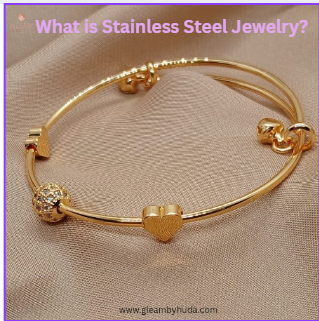
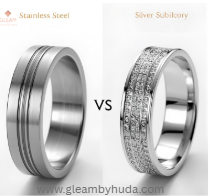
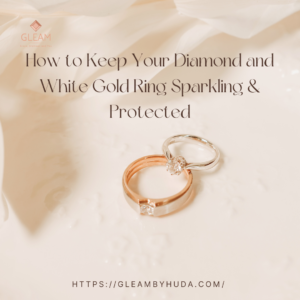

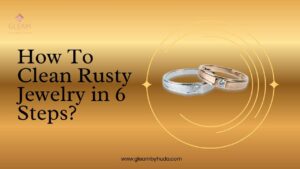
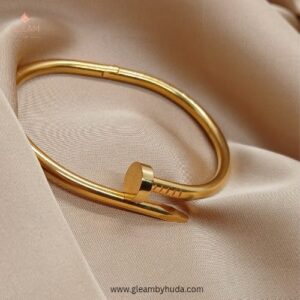 Nail Handcuff
Nail Handcuff  Gucci Handcuff – Stainless Steel Bracelet
Gucci Handcuff – Stainless Steel Bracelet 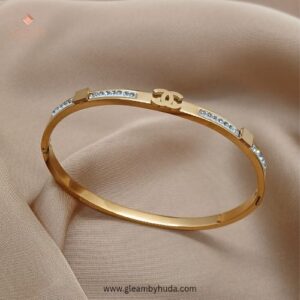 Chanel Handcuff
Chanel Handcuff  Pink Ribbon Gajra
Pink Ribbon Gajra